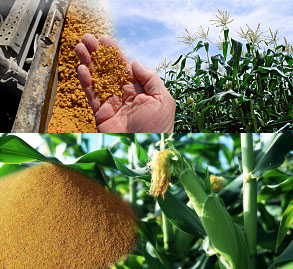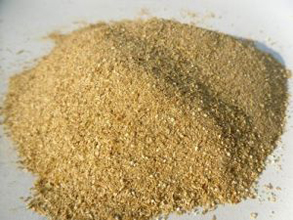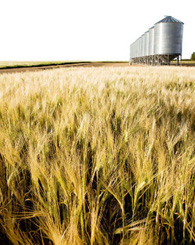Other Protein Raw Material




Fishmeal is a high protein feed obtained from the whole fish or its offal after being processed by cooking, pressing, drying and crushing. It can be divided into white fishmeal and red fishmeal based on different wild species of raw material。
> Varieties of Fishmeal: White Fishmeal、Red Fishmeal
1). Varieties of Fishmeal
White fish meal is generally produced with the trimming of processed white fish raw material, including the POLLOCK, HOKI, HAKE, BLUE WHITING, COD etc. The crude protein content can be reached above 68%-70%. In recent years, as the yields of fillets and surmmi is relative high, the protein of fishmeal declines to 60%-65% in general. Because of its high freshness and good nutrition, the nutritional value of white fishmeal is far higher than other steam dried fish meal. Besides with its high absorption and utilization, it can be used as special aquatic feed, such as eel and soft-shelled turtle. There’re 2 kinds of processing methods for white fish meal: factory vessels processing and onshore processing. The former means to process the fish meal on vessels at the first time when wild fish were caught, therefore it has higher freshness and better quality. White fishmeal has good viscoelasticity, however, since it was produced with the offal of processed fillets, the ash in it is relative high. In some sea area such as New Zealand and Argentina, the heavy metal in the processed fish meal has exceeded the standard level.
Red Fishmeal: The main raw material of red fishmeal is anchovy, jack mackerel, sardine, Herring etc and the offal of small trash fish and shrimp being processed, which is mainly used as aquatic feed and livestock feed. The crude protein of red fishmeal is normally above 65%, and some can even reach to 68%. The pure jack mackerel fishmeal is produced in south Chile, processed with nearly 100% of raw material of jack mackerel. With its biggest advantage of good viscoelasticity, high protein and conversion rate close to white fishmeal and good lysine balance, jack mackerel fishmeal is a kind of excellent raw material used for producing powder feed.
2). Fishmeal Key Index
Protein
Fat
Free Fatty Acid
Acids Value
Moisture
Salt & Sand
Ash
Histamine
Total Volatile Basic Nitrogen

Product Overview
Distiller's Dried Grains with Soluble (DDGS) is a by-product of the distillery industries.
Distiller's Dried Grains with Soluble is the dried residue remaining after the starch fraction of corn is fermented with selected yeasts and enzymes to produce ethanol and carbon dioxide. After complete fermentation, the alcohol is removed by distillation and the remaining fermentation residues are dried.
With more than 26% of protein, DDGS has been widely used as a new type of feed protein ingredients in feed producers both home and abroad, replacing some corns, soybean meal and fishmeal for livestock and aquaculture feeding, it can be used in ruminant diets directly.
Appearance: range between yellowish brown to dark brown, contains a big amount of soluble contents, and the color darkens as the drying temperature increases.
Taste: a fermented smell, including organic acids, with a mild sour taste
The comparison of the U.S. DDGS and domestic DDGS
The typical U.S. DDGS nutritional value: with more than 26% crude protein, more than 10% crude fat, 0.85% lysine and 0.75% phosphorus. Depending on different alcohol production processes and drying processes, there is a big difference of the nutrient content level and utilization between them. The nutrients of the domestic DDGS are easily varied, and due to the removal of corn germs before fermentation, the product normally contains a lower level of fat, thus, a lower level of energy. The low utilization rate of the proteins in domestic DDGS is possibly caused by the over-heating in the drying process.
Market outlook
DDGS has a high nutritional value, it can partially replace corn and soybean meal. It is very cost-effective, especially during these years while the price of fishmeal has highly increased and many feed mills has increased the usage of vegetable protein, therefore DDGS has a bright future in the market.
About Supply
Due to the influence of national food policy and international oil prices, the supply of the domestic DDGS is low and unstable at present. Due to the U.S. Oil Crisis, the proportion of ethanol mixed in gasoline increased, and the production of corn ethanol also increased, therefore the supply of the by-product DDGS also increased, the supply of U.S. DDGS will reach an estimated 40 million tons in 2015.

U.S. Rice bran is the main byproduct of rice processing is attached in the surface layer on the brown rice after rice hulling, it consists of exocarp and mesocarp, crosslinking, seed coat and aleurone layer, accounting for 5% of the rice weight . Rice bran is rich in protein and oil.


Barley is a major cereal grain. As a kind of energy ingredient, barley is partly replaced corn to be added in the feed for its advantages of high protein, good palatability. It contains about 5% of crude fiber, which helps to the animal’s gastrointestinal peristalsis and maintains normal digestion function. Barley has been widely used by the domestic feed manufacturers nowadays